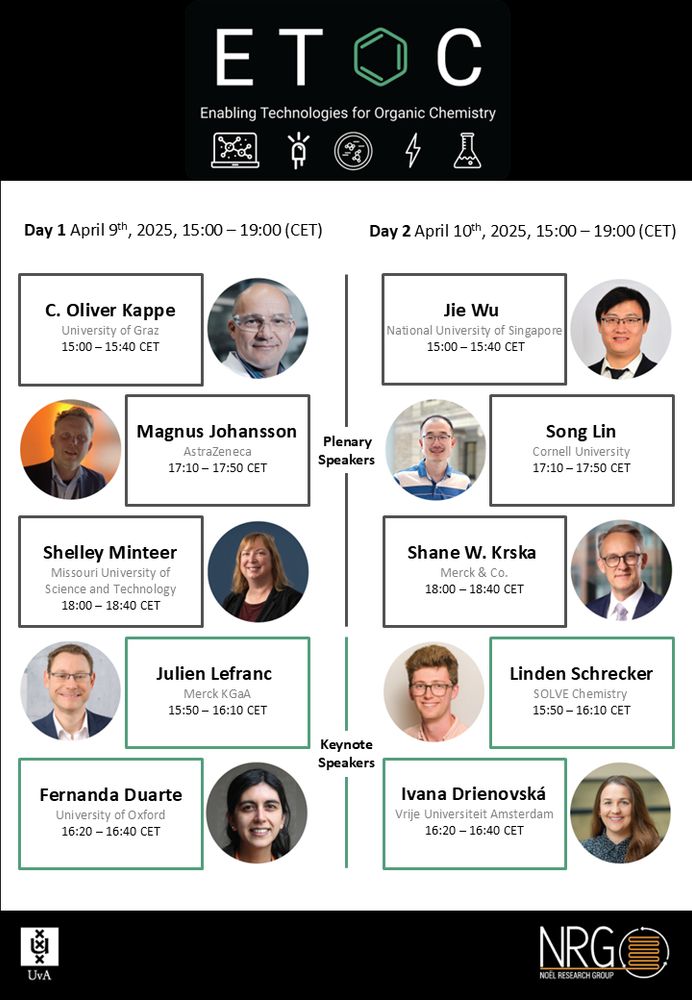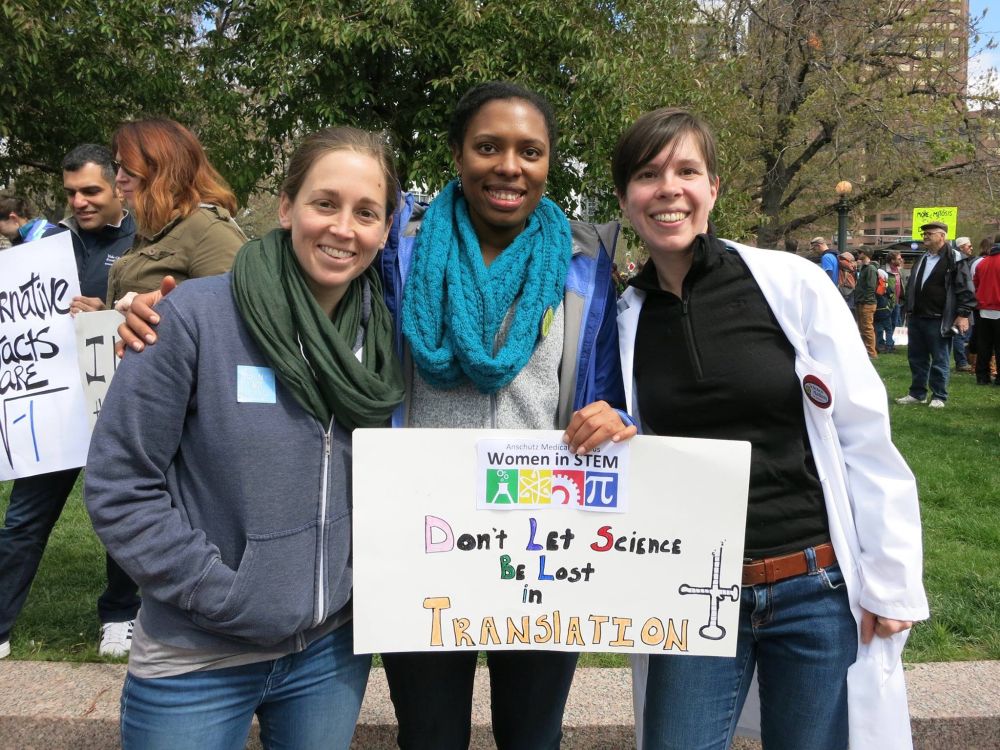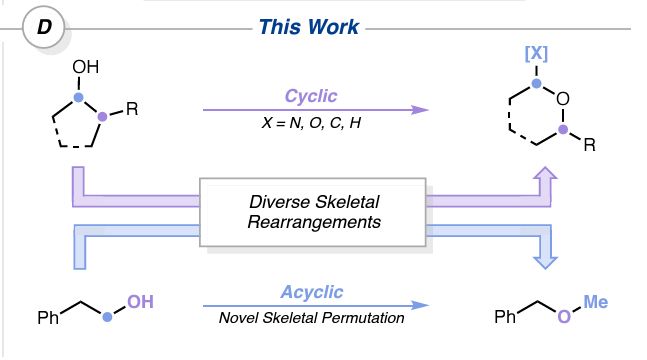Zach Wickens
@zachwickens.bsky.social
530 followers
87 following
3 posts
Associate professor at UW-Madison. Views my own.
Posts
Media
Videos
Starter Packs
Pinned
Zach Wickens
@zachwickens.bsky.social
· Dec 12

Alkene Carboxy-Alkylation via CO2•–
Herein, we introduce a new platform for alkene carboxy-alkylation. This reaction is designed around CO2•– addition to alkenes followed by radical polar crossover, which enables alkylation through carbanion attack on carbonyl electrophiles. We discovered that CO2•– adds to alkenes faster than it reduces carbonyl electrophiles and that this reactivity can be exploited by accessing CO2•– via hydrogen atom transfer from formate. This photocatalytic system transforms vinylarenes and carbonyl compounds into a diverse array of substituted γ-lactone products. Furthermore, indoles can be engaged through dearomative carboxy-alkylation, delivering medicinally relevant C(sp3)-rich heterocyclic scaffolds. Mechanistic studies reveal that the active photocatalyst is generated in situ through a photochemically induced reaction between the precatalyst and DMSO. Overall, we have developed a three-component alkene carboxy-alkylation reaction enabled by the use of formate as the CO2•– precursor.
pubs.acs.org
Reposted by Zach Wickens
Oliver Wenger
@wengeroliver.bsky.social
· Aug 27

Photoinduced double charge accumulation in a molecular compound - Nature Chemistry
The photoinduced accumulation of redox equivalents is a challenging requirement for artificial photosynthesis. Now a molecule has been developed in which the sequential absorption of photons results i...
www.nature.com
Reposted by Zach Wickens
SuPrCat
@nsfsuprcat.bsky.social
· Jun 19
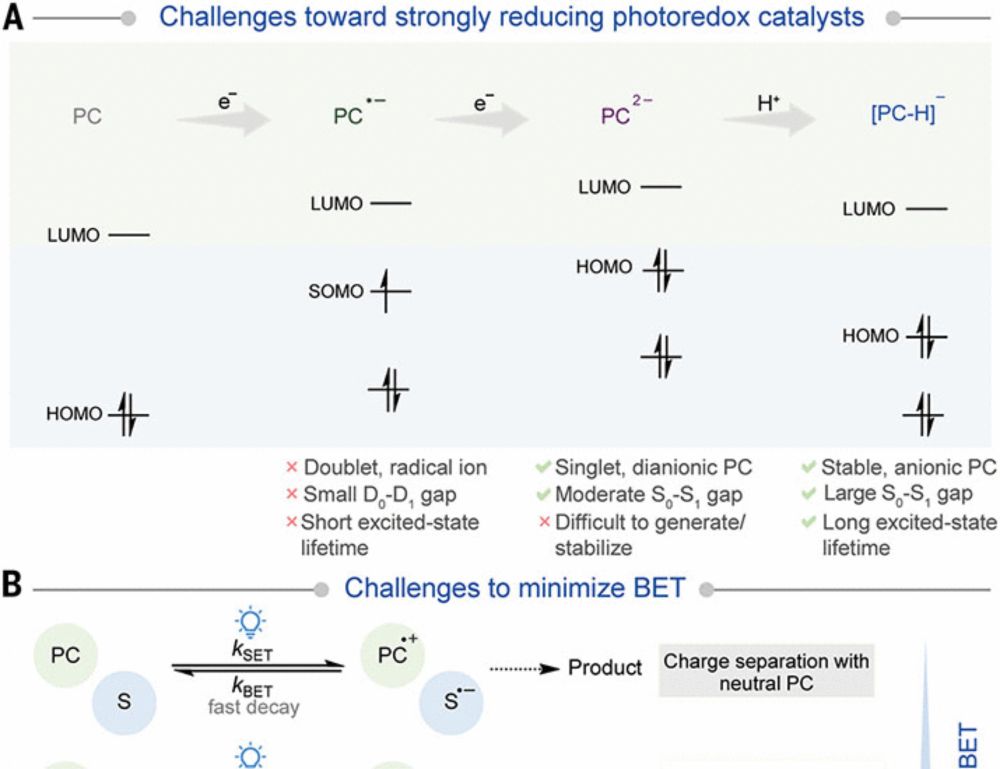
Efficient super-reducing organic photoredox catalysis with proton-coupled electron transfer mitigated back electron transfer
Photoredox catalysis driven by visible light has improved chemical synthesis by enabling milder reaction conditions and unlocking distinct reaction mechanisms. Despite the transformative impact, visib...
www.science.org
Reposted by Zach Wickens
SuPrCat
@nsfsuprcat.bsky.social
· May 2
Reposted by Zach Wickens
Reposted by Zach Wickens
Reposted by Zach Wickens
Reposted by Zach Wickens
Reposted by Zach Wickens
Reposted by Zach Wickens
SuPrCat
@nsfsuprcat.bsky.social
· Mar 11
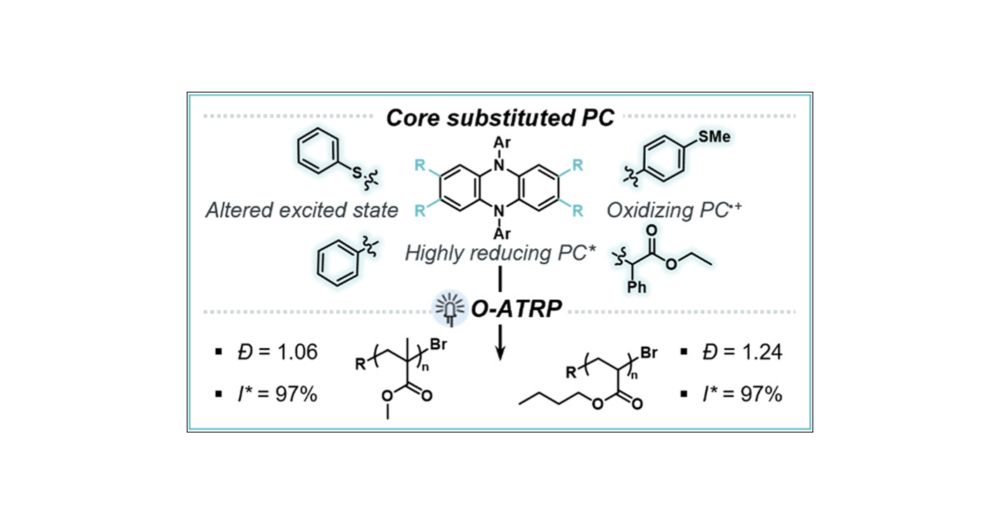
Influence of Dihydrophenazine Photoredox Catalyst Excited State Character and Reduction Potentials on Control in Organocatalyzed Atom Transfer Radical Polymerization
The development of N,N-diaryl dihydrophenazine organic photoredox catalysts (PCs) has enabled numerous examples of organocatalyzed atom transfer radical polymerization (O-ATRP) of methyl methacrylate (MMA) monomer to polymers with low dispersity (Đ < 1.30) and near-unity initiator efficiency (I* ∼ 100%), as well as small molecule synthesis. In this work, we investigate the influence of core substitution (CS) by alkyl, aryl, and heteroatom groups on singlet excited state reduction potential (ES1°*). We observe that a highly reducing ES1°* is in part a result of a locally excited (LE)-dominated hybridized local and charge transfer (HLCT) excited state in CS PCs, which is influenced by the identity of the core substituent. Additionally, the PCs that possess a LE-dominated HLCT character maintain a relatively oxidizing PC radical cation oxidation potential (E1/2) for deactivation in O-ATRP compared to fully LE PCs reported in prior work. For example, a thiophenol core substituted (heteroatom CS, HetCS) PC shows the most negative ES1°* (−2.07 V vs SCE), more LE character (Stokes shift = 124 nm), and has an oxidizing PC radical cation (E1/2 = 0.30 V vs SCE). The CS PCs with improved properties, including more negative ES1°*, perform best in O-ATRP of MMA with the HetCS PC showing the best control in both DMAc (Đ = 1.08, I* = 89%) and EtOAc (Đ = 1.06, I* = 97%). Additionally, the HetCS PC was found to mediate the controlled polymerization of n-butyl acrylate (n-BA) (Đ = 1.24, I* = 97%), which has remained challenging in O-ATRP without supplemental deactivation strategies. An aryl CS PC was found to have moderate control as low as 1 ppm PC, indicating facilitation of low PC loadings (Đ = 1.33, I* = 69%). The relationship between excited state character, ES1°*, and polymerization control observed in this work provides a foundation for increasing the utility of phenazine PCs across photoredox catalysis.
pubs.acs.org
Reposted by Zach Wickens
Reposted by Zach Wickens
Chise
@sailorrooscout.bsky.social
· Feb 26
Reposted by Zach Wickens
Mark Levin
@levinchem.bsky.social
· Feb 22
Reposted by Zach Wickens
Reposted by Zach Wickens
Reposted by Zach Wickens
Reposted by Zach Wickens
Reposted by Zach Wickens
Oliver Wenger
@wengeroliver.bsky.social
· Jan 29
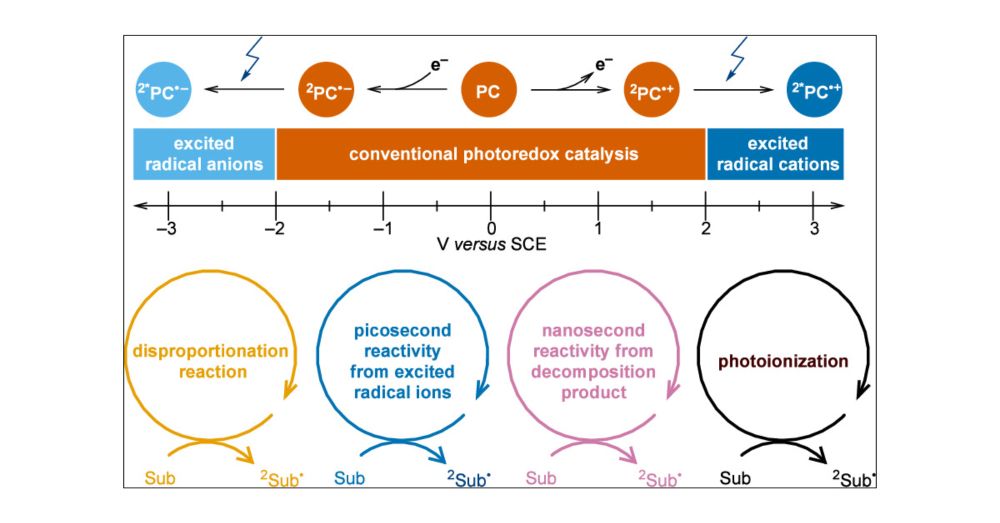
Excited Organic Radicals in Photoredox Catalysis
Many important synthetic-oriented works have proposed excited organic radicals as photoactive species, yet mechanistic studies raised doubts about whether they can truly function as photocatalysts. This skepticism originates from the formation of (photo)redox-active degradation products and the picosecond decay of electronically excited radicals, which is considered too short for diffusion-based photoinduced electron transfer reactions. From this perspective, we analyze important synthetic transformations where organic radicals have been proposed as photocatalysts, comparing their theoretical maximum excited state potentials with the potentials required for the observed photocatalytic reactivity. We summarize mechanistic studies of structurally similar photocatalysts indicating different reaction pathways for some catalytic systems, addressing cases where the proposed radical photocatalysts exceed their theoretical maximum reactivity. Additionally, we perform a kinetic analysis to explain the photoinduced electron transfer observed in excited radicals on subpicosecond time scales. We further rationalize the potential anti-Kasha reactivity from higher excited states with femtosecond lifetimes, highlighting how future photocatalysis advancements could unlock new photochemical pathways.
pubs.acs.org
Reposted by Zach Wickens








